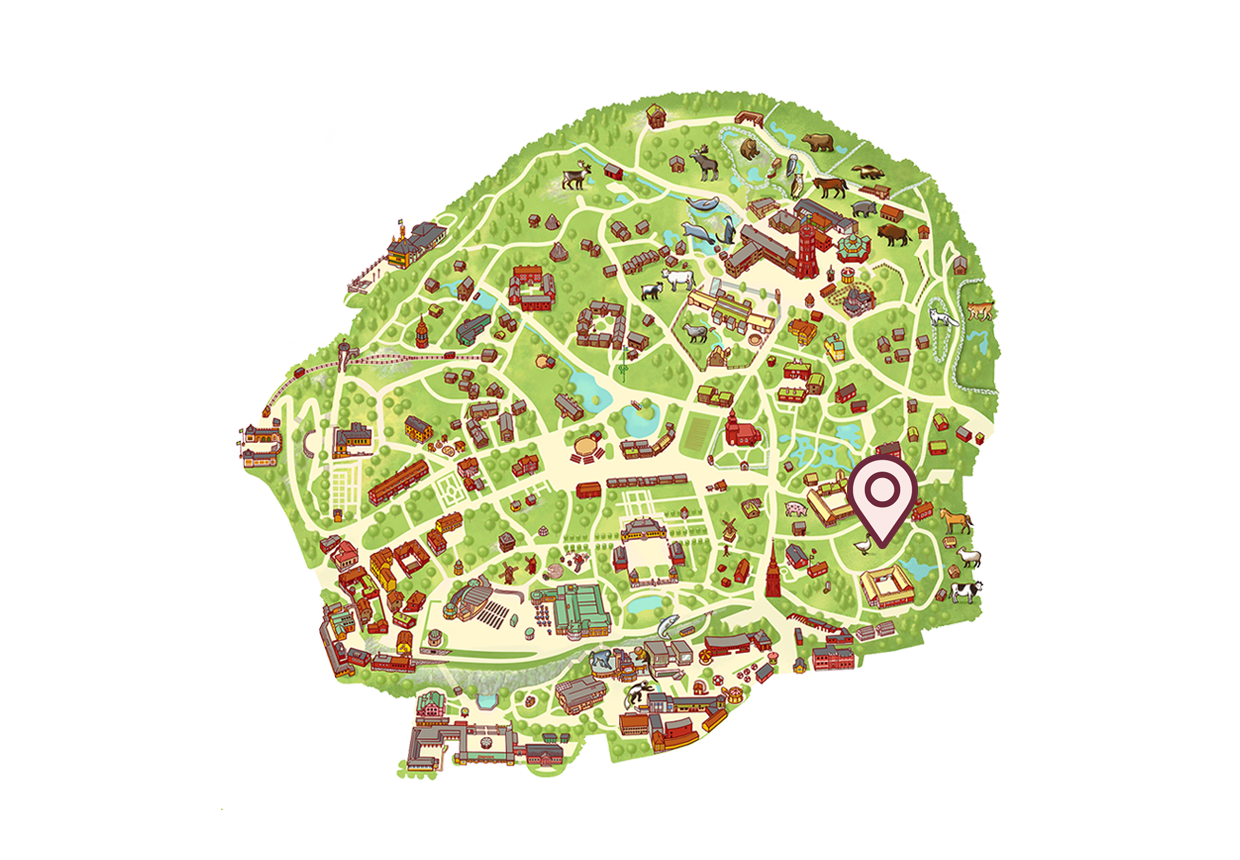- Scania goose
Scania goose
Goose rearing is the oldest form of poultry rearing, and geese were domesticated as early as the Bronze Age. Geese are very good at guarding their territory, and make loud noises when a stranger approaches.
-
The Scania goose is partly descended from an old Swedish native bred, the Skanör goose, and partly from imported Pomeranian geese, with negligible elements of Hungarian and Russian geese. Despite this, the Scania goose is probably not as affected by crossbreeding as was once thought to be the case.
Large and heavy
This is a large, heavy breed with an abdominal pouch. Some males can weigh up to 15 kg. They are white in colour, with greyish-brown mottled areas. They are hardy birds, and thrive in the damp, cold winters of southern Sweden. They are good incubators, mothers and ganderers.
-
About the Scania goose
Scientific name:Anser domesticus
Order:Waterfowl (Anseriformes)
Family:True waterfowl (Anatidae)
Weight:Female 7–8 kg, male (gander) 8–10 kg
Length:74–84 cm, wingspan 150–168 cm
Number of eggs:20–30 per year
Eats:Grass, tender shoots and leaves of various herbs such as dandelion, grains and berries
Habitat:Islands or peninsulas next to the water
-
With good grazing, Scania geese grow quickly and make excellent slaughtering birds. Geese are very good at guarding their territory, and make loud noises when a stranger approaches.
Lives in lifelong relationships
Like all geese, Scania geese are highly intelligent. They live in lifelong relationships, and the male can have up to three female mates. These lay 20–30 eggs per season and the young are called goslings. Scania geese can live to be very old, living for several decades if they are not slaughtered prematurely.
The wild goose usually builds its nest on islands or peninsulas next to the water, ideally on a small hill with a clear view of the water. Even the domesticated Scania goose likes to have access to a pond and to keep an eye on its surroundings.
The goose makes a loud trisyllabic “ga-gann-gack, gi-gann-gack” sound, and it warns by hissing.
The history of the Scania goose
Geese were common in the countryside, but could also be found in towns. According to folklore, geese would hiss before it started to rain. In Norse mythology, the goose was said to be Thor’s guardian bird.
Geese were the responsibility of women. They often slaughtered the geese, and plucking a goose was hard work. In the 18th and 19th centuries, farmers’ wives in Skåne sometimes had goose benches in their farmhouses where two or three geese could incubate their eggs.
Geese provided meat, down and eggs. Their fat was worth more than butter, and was also used for medicinal purposes. Goose fat was available in pharmacies from the 18th century, and was said to be good for toothache. Quills were made for writing with and for guiding arrows. When shooting a cannon, a quill was needed to make a hole in the gunpowder cartridge. In 1757, 65,000 goose quills were exported from Ystad alone.
Grazed on stubble fields
Market days were first held in Malmö in the 1860s. They attracted many people and boosted the goose trade. This is when the era of fattening on stubble began. Young geese were bought for the large farms, for example from crofters and agricultural labourers, and the birds were fattened for slaughtering by letting them graze in the stubble fields until St Martin’s Eve on 10 November. The stubble fields also had plenty of pasturage left for cows, chickens and pigs. After a while, young geese began to be purchased from other regions such as Öland, and the arrival of the railways meant that geese could also be imported from Pomerania, Hungary and Russia. Transport was not good from an animal welfare point of view, and in 1906 quarantine was introduced, leading to a decline in imports.
The First World War put an end to the goose trade and the practice of weeding stubble fields also began, which meant that grazing disappeared. The price of a goose consequently rose from 10 kronor to 100 kronor.
The number of geese fell during the 1930s, but increased slightly again with deurbanisation in the 1970s.
By 2020 there were only about 119 Scania geese remaining, and the breed is currently endangered.
-
St Martin’s Eve
The tradition of eating goose on 11 November comes from the feast day of St Martin of Tours. The goose was his saintly attribute as, according to legend, he was given away by the geese while hiding in a barn to avoid becoming a bishop. The geese were eaten as a punishment, and it was decided that geese should always be eaten on this day. It also coincides with the time in early November when geese are at their fattest. The tradition spread within the Catholic Church from France to the rest of Europe. As well as eating goose, the festivities also included special pastries and wine tasting for the year’s harvest.
In the Nordic countries, St Martin has been commemorated since the 12th century. In Protestant areas, Martin Luther – whose birthday was 10 November – gradually took over the role. Celebrations had already begun on the evening of the day before 11 November. There is evidence from Stockholm that St Martin’s Day goose dinners were first eaten in the city and only came to the countryside later on. Since the 19th century, St Martin’s Day dinners have included goose blood soup, goose and Skåne apple cake.
It was originally seen as a bourgeoisie and gentry custom, and in some parts of Skåne poor people had to make do with herring instead, which was then called ‘mountain goose’. Goose could also be served on Christmas Eve, but in dried, salted form.
You can find the Scania goose here
